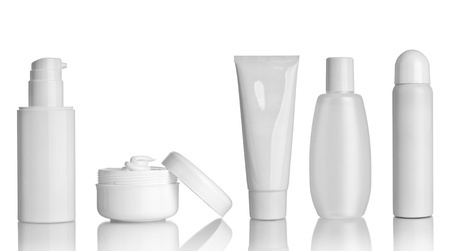A range of chemicals found in some pesticides, cosmetics, toys and food containers, are thought to contribute to reproductive health problems in hundreds of thousands of women. This could cost the EU more than 1.4bn Euros (£1 billion) a year in health care costs and lost earning potential, according to new research involving the University of Aberdeen.
To come up with the figure, researchers, including experts from Washington State University, Seattle Children’s Research Institute, the University of Washington in Seattle and the University of Aberdeen and led by Dr Leonardo Trasande, New York University Langone Medical Center, examined a number of medical conditions that could be caused by environmental chemicals.
Endocrine-disrupting chemicals (EDCs) have been linked to conditions such as uterine fibroids - benign growths on the uterus that can contribute to infertility and other health problems – and endometriosis, where the tissue that normally lines the uterus develops elsewhere in the body. The two conditions are common, with as many as 70% of women affected by at least one of the disorders.
Past studies suggest a very persistent by-product of the banned pesticide DDT, a chemical known as DDE, can raise the risk of developing uterine fibroids. Another group of chemicals called phthalates, which are found in plastic products, cosmetics and body-care products, have been tied to growing risk of endometriosis.
DDT, DDE and phthalates are known EDCs – chemicals that can contribute to health problems by mimicking, blocking or otherwise interfering with the body’s hormones. Unborn children are particularly vulnerable because exposure during key points in development can raise the risk of health problems later in life.
Authors of the paper, published in The Journal of Clinical Endocrinology & Metabolism, used a number of criteria to evaluate the likelihood of EDCs being a contributing factor to a number of medical conditions. They estimated 145,000 cases of endometriosis and 56,700 cases of uterine fibroids in Europe could be attributed to exposure to endocrine-disrupting chemicals.
The economic analysis included direct costs of hospital stays, physician services, and other medical costs. The researchers also calculated estimates of indirect costs such as lost worker productivity associated with these disorders.
The study is part of a series of economic analyses that found endocrine-disrupting chemical exposure may be costing the European Union upwards of €157 billion (£122 billion) a year. Prior studies in the series examined the costs associated with infertility and male reproductive dysfunctions, birth defects, obesity, diabetes, cardiovascular disease, and neurobehavioral and learning disorders.
Professor Paul Fowler, Director of the Institute of Medical Sciences at the University of Aberdeen, who is one of the authors, said: “This study highlights that exposure to environmental “every day” chemicals may contribute substantially to the potential health costs and lost working hours to the EU resulting from two of the most common reproductive women’s diseases. Of particular concern are endocrine disrupting compounds – chemicals that can disturb the body’s hormone systems.”
“The data shows that protecting women from exposure to endocrine-disrupting chemicals could substantially reduce rates of disease and lower health care and other social costs of these conditions,” said study leader, Dr Leonardo Trasande.
“Although these two gynaecological conditions affect millions of women worldwide, we recognize that this analysis only reflects the tip of the iceberg,” Trasande said. “A growing body of evidence suggests EDC exposure is linked to a broader range of female reproductive problems, including polycystic ovary syndrome, infertility and pregnancy complications. These disorders also place a significant cost burden on women, their families and society as a whole.”
Method
To assess the economic burden of EDC exposure, a panel of global EDC experts was convened to adapt existing environmental health cost models. The study relied on the Institute of Medicine’s 1981 approach of assessing the contribution of environment factors in causing illness. Based on the body of established literature, the researchers evaluated the likelihood that EDCs contributed to various medical conditions and dysfunctions.
Researchers only considered endometriosis and uterine fibroids in the analysis because there is robust data on their incidence and association with endocrine-disrupting chemical exposure. Data for the role of EDCs in other women’s health conditions are much less clear. The researchers estimated that 145,000 cases of endometriosis and 56,700 cases of uterine fibroids in Europe could be attributed to exposure to endocrine-disrupting chemicals.


